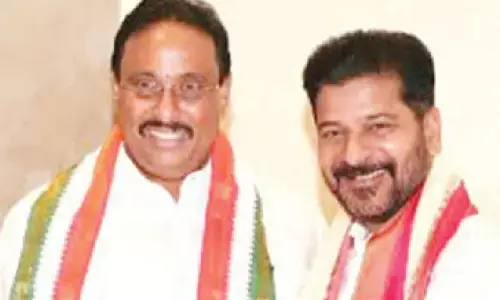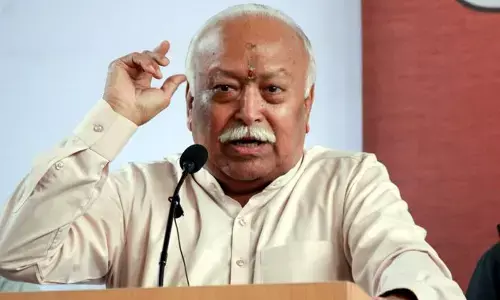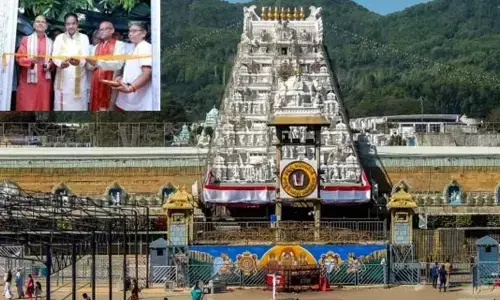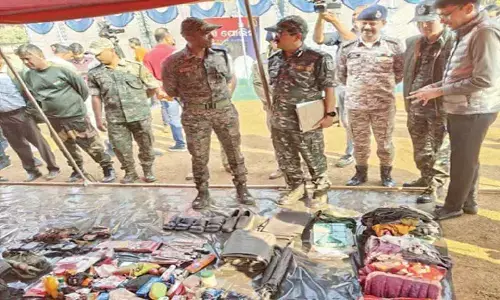Make in india

The Department of Industrial Policy and Promotion (DIPP), has formulated a strategy for increasing the contribution of the manufacturing sector to 25 per cent of the GDP by 2020. the Make in India initiative, which is based on four pillars --new processes, new infrastructure, new sectors and new mindset—has been taken by the government.
The Department of Industrial Policy and Promotion (DIPP), has formulated a strategy for increasing the contribution of the manufacturing sector to 25 per cent of the GDP by 2020. the Make in India initiative, which is based on four pillars --new processes, new infrastructure, new sectors and new mindset—has been taken by the government.
The Government of India has set up
- Invest India as the national investment promotion and facilitation agency.
- Investment Facilitation Cell: With the objective of promoting investment in the country, primarily to support all investment queries as well as to handhold and liaise with various agencies on behalf of potential investors.
- For supporting the financial needs of the small and medium enterprise sector and promote start-ups and Entrepreneurship
- The India Aspiration Fund has set up under the Small Industries Development Bank of India (SIDBI) for venture capital financing of newly set-up or expanding units in the MSME sector.
- SIDBI Make in India Loan for Small Enterprises (SMILE) has been launched to offer quasi-equity and term-based short-term loans to Indian SMEs with less stringent rules and regulations and a special focus on 25 thrust sectors of Make in India.
- Micro Units Development Refinance Agency (MUDRA) Bank has been set up to provide development and refinance to commercial banks / NBFCs/cooperative banks for loans given to micro-units. MUDRA Bank would follow a credit-plus approach by also providing financial literacy and addressing skill gaps, information gaps, etc.
In the World Economic Forum’s Global Competitiveness Index 2015-16, India’s position has improved to 55 went up 16 ranks from previous year.
National LED Programme
The Prime Minister, on 5th January 2015, launched the 100 cities National LED Programmes with the aim of promoting use of the most efficient lighting technology at affordable rates. This programme has two components:
- Domestic Efficient Lighting Programme (DELP) aiming to replace 77 crore incandescent bulbs with LED bulbs by providing LED bulbs to domestic consumers.
- Street Lighting National Programme (SLNP) to replace 3.5 crore conventional streetlights with smart and energy-efficient LED streetlights by March 2019.
- National Smart Grid Mission (NSGM): in the power sector to plan and monitor implemen-tation of policies and programmes related to smart grid activities in India.
- Pradhan Mantri Khanij Kshetra Kalyan Yojna (PMKKKY): an amount of R 6000 crore per annum is to be spent on welfare schemes related to people and districts adversely affected by mining activities.
New And Renewable Energy
The target from various renewable energy sources has been increased to 175 GW by the year 2022. The major contributions are expected to be 100 GW from solar energy and 60 GW from wind energy. Major policy initiatives taken by the government during the year include:
- The National Offshore Wind Energy Policy 2015 to exploit the vast 7600 km coastline for development of offshore wind energy in the Indian Exclusive Economic Zone (EEZ),
- Inclusion of renewable energy in the priority sector and bank loans up to R15 crore limit to borrowers categories.
- Investments in renewable energy are on automatic route, i.e. automatic approval for up to 74 per cent foreign equity participation in a JV and 100 per cent foreign investment as equity is permissible with the approval of the Foreign Investment Promotion Board (FIPB),
- Approval to the amendments in the National Tariff Policy 2005.
- Bharatmala programme: Bharatmala is a proposed umbrella scheme at an estimated cost of R2,67,200 crore for
- Development of State Roads along Coastal areas / Border areas, including connectivity of non-major ports, about 7000 km;
- Backward Areas, Religious, Tourist Places Connectivity programme, about 7000 km;
- Setubhratam Pariyojana which is for the construction of about 1500 major bridges and 200 ROBs / RUBs; and
- District Head Quarter Connectivity Scheme for development of about 9000km newly declared NHs for R60,000 crore. The programme is targeted for completion by 2022.
BharatNet: BharatNet / National Optical Fibre Network (NOFN) project is planned to connect all gram panchayats (approximately 2.5 lakh) in the country through optical fibre, utilizing existing fibre of PSUs, namely BSNL, RailTel and Power Grid, and laying incremental fibre wherever necessary.
National Heritage City Development and Augmentation Yojana (HRIDAY): The HRIDAY scheme aims at preserving and revitalizing the soul and unique character of heritage cities in India. In the first phase, with a total outlay of R500 crore fully funded by the central government, twelve cities--Ajmer, Amaravati, Amritsar, Badami, Dwarka, Mathura, Puri, Varanasi, Velankanni, Kanchipuram, Gaya and Warangal—have been identified for development.
Atal Mission for Rejuvenation and Urban Transformation (AMRUT): AMRUT was launched with the objective of improving basic urban infrastructure in 500 cities/ towns which will be known as mission cities/towns. The total outlay for AMRUT, which is being operated as a Centrally Sponsored Scheme (CSS), is R50,000 crore for five years from financial year 2015-16 to 2019-20.
Cities with a population of 10 lakh or above are entitled to central assistance of one-third of the project cost and all other cities, one half of the project cost. Balance funding is to be arranged by state governments/ urban local bodies (ULB), including through private investment.
Smart Cities:
The purpose of the Smart Cities Mission is to drive economic growth and improve the quality of life of people by enabling local area development and harnessing technology, especially technology that leads to smart outcomes.
The core infrastructure development in a smart city includes adequate water supply; assured electricity supply; sanitation, including solid waste management; efficient urban mobility and public transport; affordable housing, especially for the poor; robust IT connectivity and digitalization; good governance, especially e-Governance and citizen participation; sustainable environment; safety and security of citizens, particularly women, children and the elderly; and health and education.
The Mission will cover 100 cities which have been distributed among the states and UTs on the basis of equitable criteria. The Smart City Mission will be operated as a Centrally Sponsored Scheme and the central government proposes to give it financial support to the extent of Rs 48,000 cr over five years, i.e. on an average R100cr per city per year.
An equal amount, on a matching basis, will have to be contributed by the state/ULB; therefore, nearly one lakh crore of government/ULB funds will be available for smart cities development. The distribution of smart cities will be reviewed after two years of the implementation of the mission.
Based on an assessment of the performance of states/ULBs in the challenge, some reallocation of the remaining potential smart cities among states may need to be done by the Ministry of Urban Development (MoUD). In the first phase of implementation, twenty cities have been shortlisted to roll out the programme.
Startup India: Wings to Fly above the Sky
Startup India is a flagship initiative of the Government of India to build a strong ecosystem for nurturing innovation, driving sustainable economic growth and generating large-scale employment opportunities.
Proposed Action Plans
- Creating a compliance regime based on self-certification to reduce the regulatory burden on start-ups.
- Setting up Startup India hub to create a single point of contact for the entire Startup ecosystem and enable knowledge exchange and access to funding.
- Relaxed norms of public procurement for start-ups to provide an equal platform to start-ups.
- Legal support and fast-tracking of patent examination at lower costs to promote awareness and adoption of Intellectual Property Rights (IPR) by start-ups and facilitation for them in protecting and commercializing the IPRs.
- Providing funding support through a fund of funds with a corpus of R10,000 crore.
- Tax exemption on capital gains
- Tax exemption for three years
- Launch of Atal Innovation Mission with (SETU) programme to serve as a platform for promotion of world-class innovation hubs, start-up businesses and other selfemployment activities, particularly in technology- driven areas.
- Setting up of 7 new research parks modelled on the research park at IIT Madras.
- 10th session of the WTO Ministerial Conference
Nairobi Package:
Nairobi Ministerial Declaration reflects divergence amongst the WTO membership on the relevance of reaffirming the Doha Development Agenda (DDA) as the basis of future negotiations. Reflecting that there are divergences, the Ministerial Declaration also notes the “strong commitment of all Members to advance negotiations on the remaining Doha issues.”
In order to ensure that Ministerial Decision on Public Stockholding for Food Security Purposes issue remains on the agenda of future discussion in the WTO, India negotiated a Ministerial Decision which recognizes that developing countries will have the right to have recourse to an Special Safeguard Mechanism (SSM) as envisaged in the mandate. Members will continue to negotiate the mechanism in dedicated sessions of the Committee on Agriculture in Special Session.
One of the Decisions adopted extends the relevant provision to prevent ‘evergreening’ of patents in the pharmaceuticals sector. This decision would help in maintaining an affordable and accessible supply of generic medicines.
In the area of services trade, the conference took decisions such as implementation of preferential treatment in favour of services and service suppliers of least developed countries (LDC) and increasing LDC participation in services trade; and moratorium on payment of customs duties on electronic transmissions until 2017.
Preferential treatment for LDCs: So far, 21 members, including India, have notified preferential treatment to LDCs in services trade.
E-commerce: The WTO Members agreed to maintain the current practice of not imposing customs duties on electronic transmissions until the next Ministerial Conference which will be held in 2017.
Bilateral agreements:
India has signed comprehensive bilateral trade agreements, including trade in services, with the governments of Singapore, South Korea, Japan and Malaysia. An FTA in services and investment was signed with the Association of South East Asian Nations (ASEAN) in September 2014, which came into effect from 1 July 2015.
India has joined the Regional Comprehensive Economic Partnership (RCEP) plurilateral negotiations. The RCEP is a proposed FTA which includes the 10 ASEAN countries and its six FTA partners, viz. Australia, China, India, Japan, South Korea and New Zealand. The RCEP is the only mega-regional FTA of which India is a part.
Domestic Actions on Climate Change
National Mission on Coastal Areas (NMCA) will prepare an integrated coastal resource management plan and map vulnerabilities along the entire (nearly 7000-km-long) shoreline. The Ministry of Earth Sciences will provide it scientific and technical advice and the Ministry of Environment, Forest and Climate Change (MoEF&CC) will manage and implement the NMCA.
The National Clean Energy Fund (NCEF) which is supported by the cess on coal was created for the purposes of financing and promoting clean energy initiatives, funding research in the area of clean energy and for any other related activities.
The Perform Achieve and Trade (PAT) scheme under the National Mission on Enhanced Energy Efficiency was introduced as an instrument for reducing specific energy consumption in energy-intensive industries with a market-based mechanism that allowed the trading of ESCerts (energy saving certificate).
The First Renewable Energy Global Investment Promotion Meet and Expo (RE-INVEST) were organized in February 2015. The objective of the RE-INVEST series of conference expos is to showcase India’s renewable energy potential and the government's efforts to develop and scale up the country’s installed renewable energy capacity.
Sustainable Development: The United Nations General Assembly (UNGA) in its 17th session in September 2015 has announced a set of 17 SDGs and 169 targets which will stimulate action over the next 15 years. This set of goals replaces the MDGs which were coming to an end in 2015.
In the June 2012 RIO+20 United Nations Conference on Sustainable Development, the UN General Assembly’s Open Working Group proposed SDGs covering a broad range of sustainable development issues. The SDGs are effective from January 2016 and will end in 2030.
Labour Reforms:
National Career Services Portal: The Government is mandated to maintain a free employment service for its citizens. This is now being transformed with the launch of the National Career Service (NCS) Portal on 20 July 2015. The NCS is envisaged as a digital portal that will provide a nationwide online platform for job seekers and employers for job matching in a dynamic, efficient and responsive manner.
Shram Suvidha Portal: The features of the Shram Suvidha Portal launched by the Government are: unique Labour Identification Number (LIN) to units/ establishments registered on it; transparent labour inspection scheme; unified annual returns under nine central acts and unified electronic challan-cum-return for filling of monthly contribution with Employees Provident Fund Organization (EPFO) & Employee State Insurance Corporation (ESIC).
Universal Account Number: As part of the Pandit Deen Dayal Upadhyay Shramev Jayate Karyakram, portability feature has been launched through the Universal Account Number (UAN) by EPFO.
By: Balalatha Mallavarapu



















